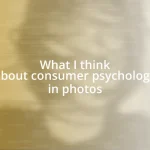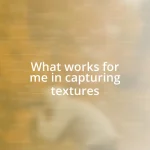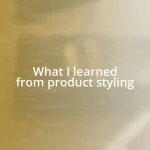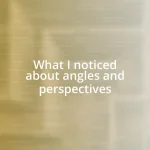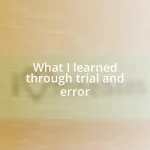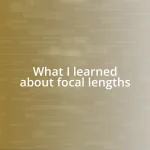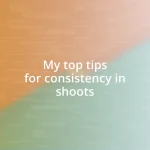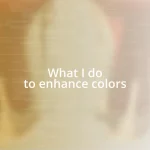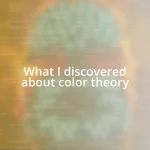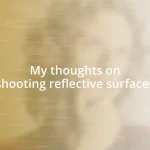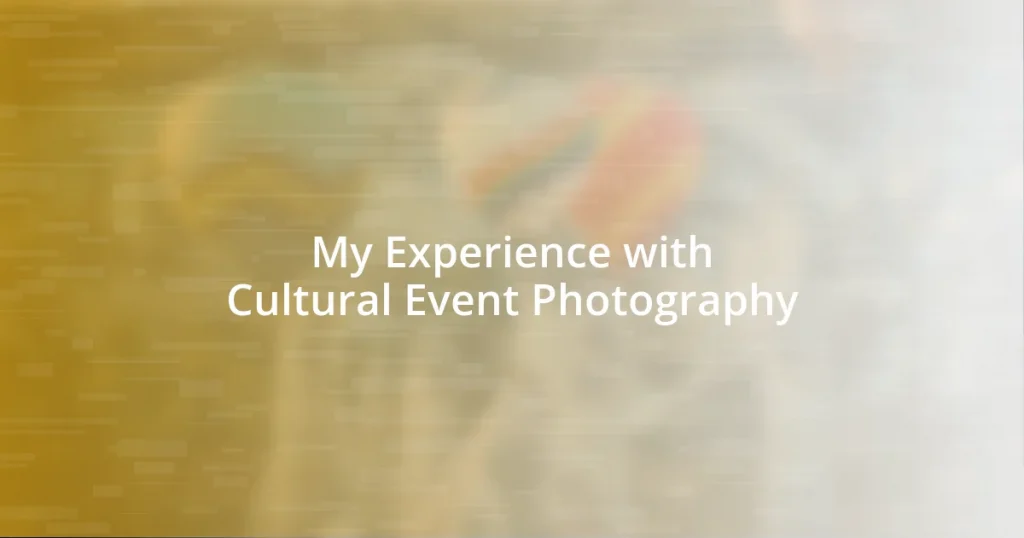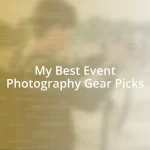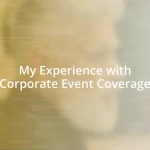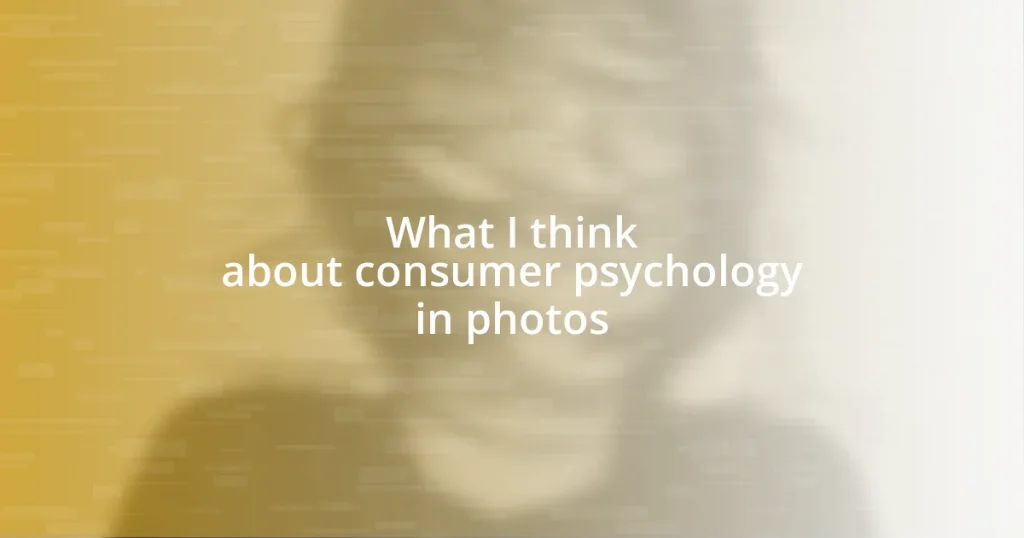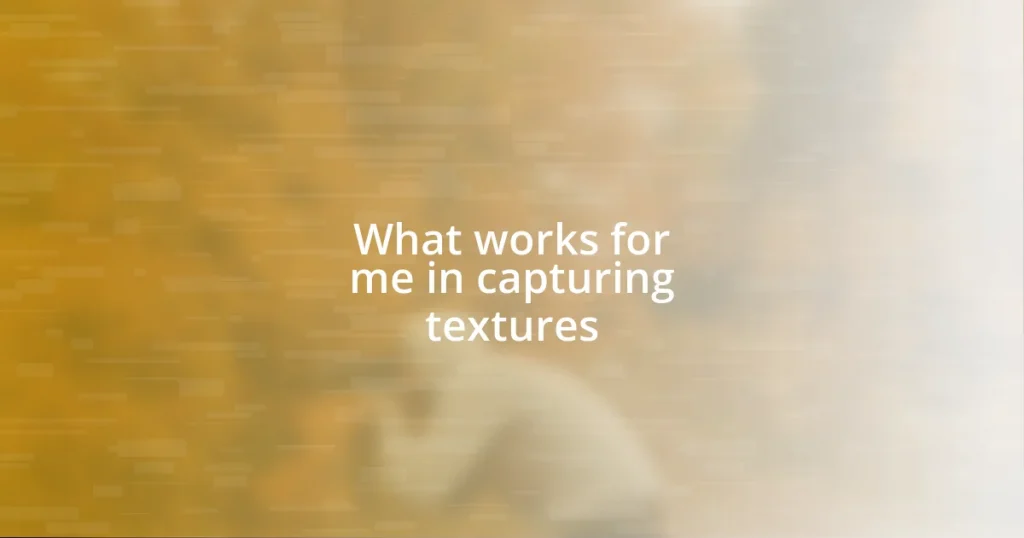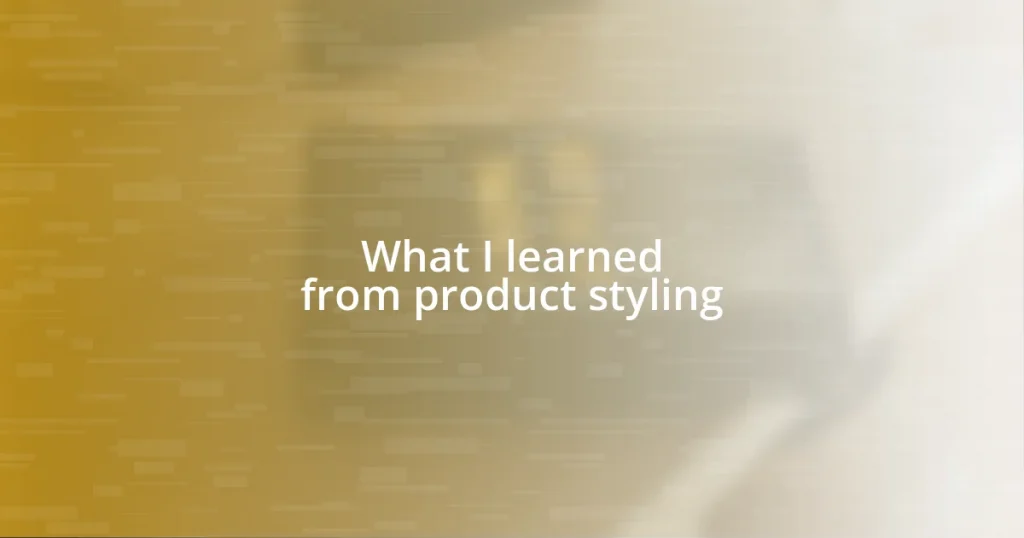Key takeaways:
- Cultural event photography combines storytelling and artistic expression; capturing authentic moments is key to showcasing the essence of a culture.
- Preparation is essential, involving research, understanding cultural nuances, and being adaptable to spontaneous moments during events.
- Post-processing enhances images, focusing on exposure, color correction, and cropping to elevate storytelling and resonate with audiences.
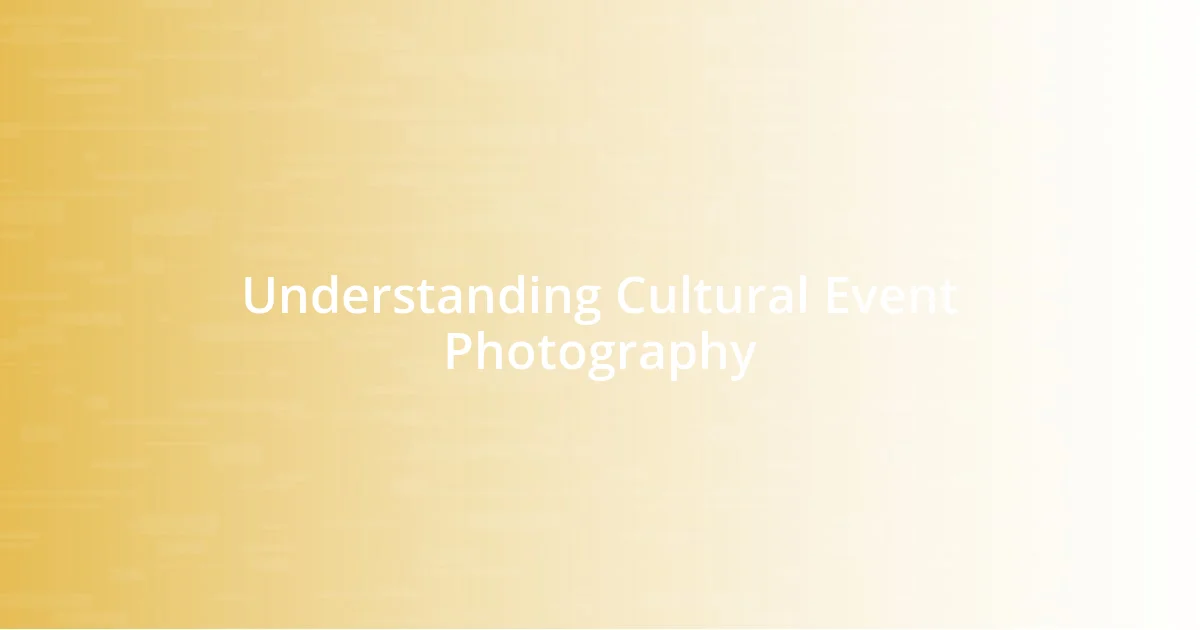
Understanding Cultural Event Photography
Cultural event photography is a unique blend of storytelling and artistic expression. I remember my first experience shooting at a vibrant Diwali celebration; the colors were so vivid, and the energy palpable. I felt like I was capturing not just faces, but the very essence of joy and tradition swirling all around me. Isn’t it fascinating how a single photograph can evoke the spirit of an entire event?
When I approach cultural events, I always ask myself: “What moment truly encapsulates the heritage being celebrated?” It’s not just about snapping pictures; it’s about understanding the significance behind each dance, song, or ritual. During a recent folk festival, I caught a breathtaking moment of dancers in mid-performance—their faces radiating pride. That moment taught me that cultural event photography isn’t just about visuals; it’s about immersing oneself into the narrative of the culture.
In my experience, the best shots occur when I let go of preconceived notions and simply observe. At a local harvest festival, I was fortunate enough to witness the bond between generations as elders shared stories with the youth, all while I clicked away. This taught me that authenticity shines through in my work—no staged poses, just genuine interactions. Have you ever felt that electric connection when capturing a moment that feels utterly true? It’s these fleeting interactions that truly define cultural event photography for me.
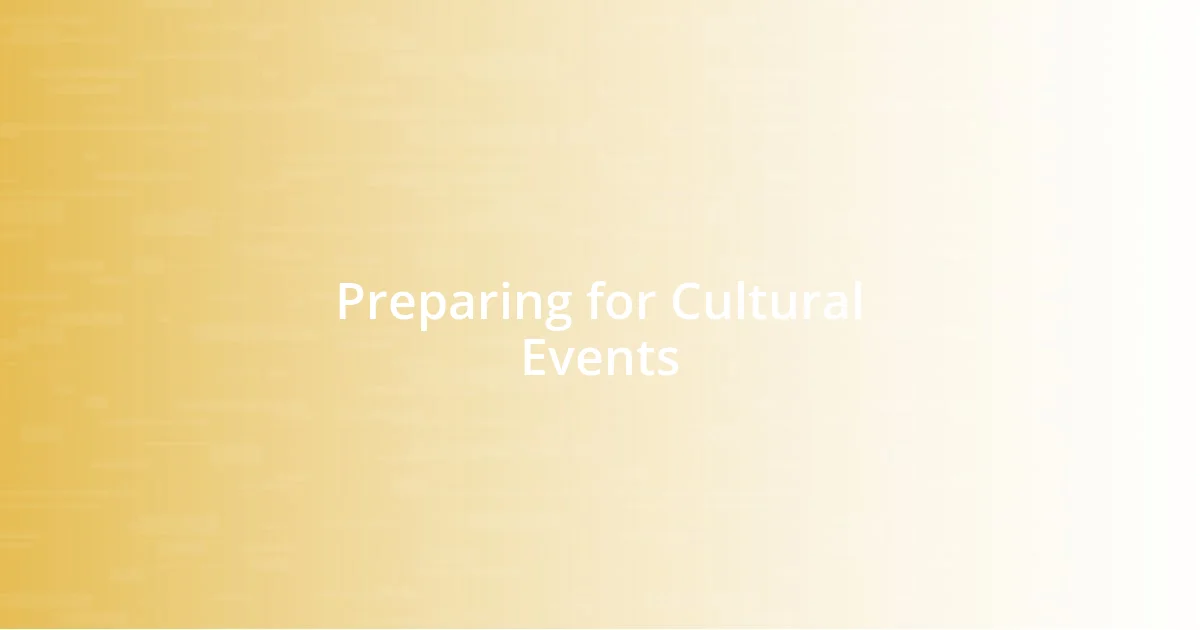
Preparing for Cultural Events
Preparing for cultural events requires a blend of logistical planning and emotional readiness. I always find it helpful to familiarize myself with the event’s schedule and the cultural nuances at play. For instance, before a traditional dance festival, I studied the significance of the different performances, which allowed me to anticipate and capture candid moments that truly resonated with the audience. There’s something incredibly fulfilling about being able to convey the layers of a culture through my lens.
Here are a few key steps I take to prepare:
- Research the Event: Understand the background, traditions, and important moments to capture.
- Scout the Location: Familiarize yourself with the venue layout for optimal shooting spots.
- Pack Appropriately: Bring essential gear and backup equipment to handle different lighting and weather conditions.
- Engage with Participants: Talk with performers and organizers to get unique insights and build rapport.
- Stay Flexible: Be ready to adapt as events unfold spontaneously, ensuring I capture authentic moments.
With this approach, I always feel equipped to capture the richness of the experience, and that anticipation often amplifies my excitement to create something special.
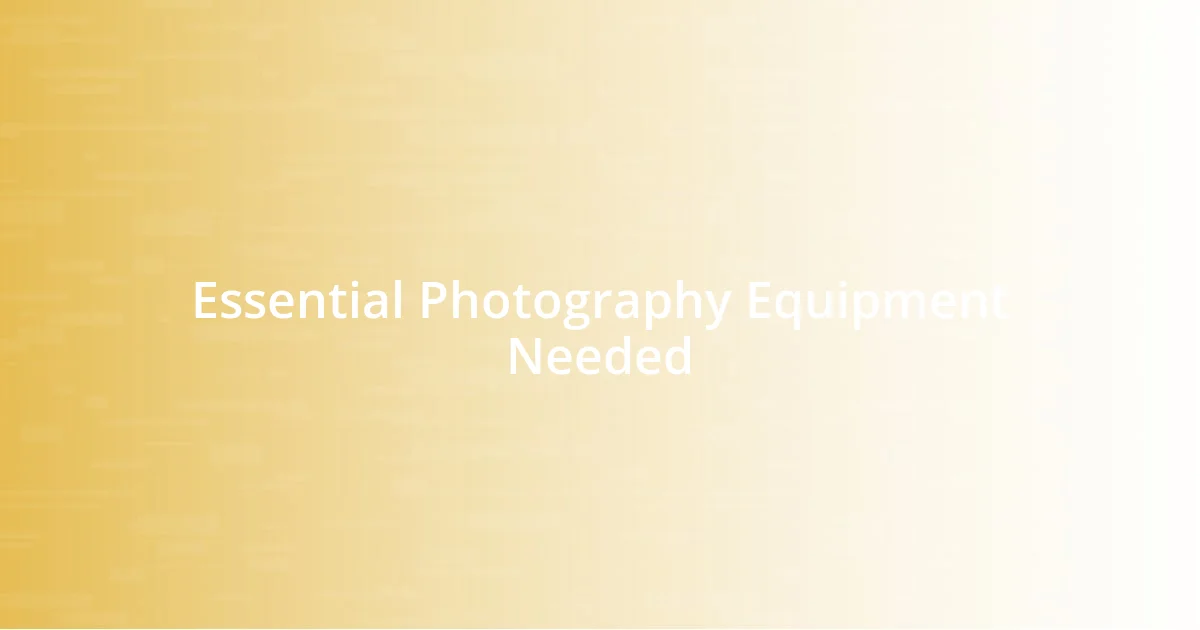
Essential Photography Equipment Needed
When it comes to cultural event photography, having the right equipment can make all the difference. A reliable camera is paramount; I often rely on my DSLR or mirrorless camera because it allows for quick adjustments and superior image quality under various lighting conditions. With diverse environments—like bustling street festivals or intimate cultural ceremonies—adaptability is crucial. I remember one particularly dimly lit traditional ceremony where a flash could’ve ruined the ambiance, but my camera’s low-light capability allowed me to capture the soft flicker of candlelight against the performers’ faces. That moment underscored my belief that investing in quality gear is essential for telling a story authentically.
Lenses are equally important, and I typically carry a mixture of primes and zooms. A wide-angle lens lets me capture the essence of the event’s atmosphere, while a fast prime lens helps isolate the subjects beautifully. For instance, when photographing a vibrant parade, my wide-angle lens enabled me to encapsulate energetic crowds against elaborate floats. That kind of detail not only tells a story but immerses viewers in the experience. I can’t stress enough how vital it is to think about the potential shots I’m looking to achieve as I choose my gear.
Lastly, don’t overlook accessories like spare batteries, memory cards, and even a good tripod. They’ve saved me countless times! I once nearly missed a stunning evening performance when I realized my camera battery was low, but thankfully, I had a backup ready. The frantic rush turned into an electrifying satisfaction when I managed to capture that performance without a hitch. It goes to show that while trying to capture the essence of a culture, preparation with the right equipment can ensure you don’t miss those pivotal moments.
| Essential Equipment | Purpose |
|---|---|
| Camera (DSLR/Mirrorless) | Captures high-quality images in diverse settings |
| Lenses (Wide-angle & Prime) | Offers versatility for close-ups and landscapes |
| Spare Batteries | Prevents interruptions during pivotal moments |
| Memory Cards | Ensures ample storage for unexpected moments |
| Tripod | Stabilizes the camera for clearer low-light shots |
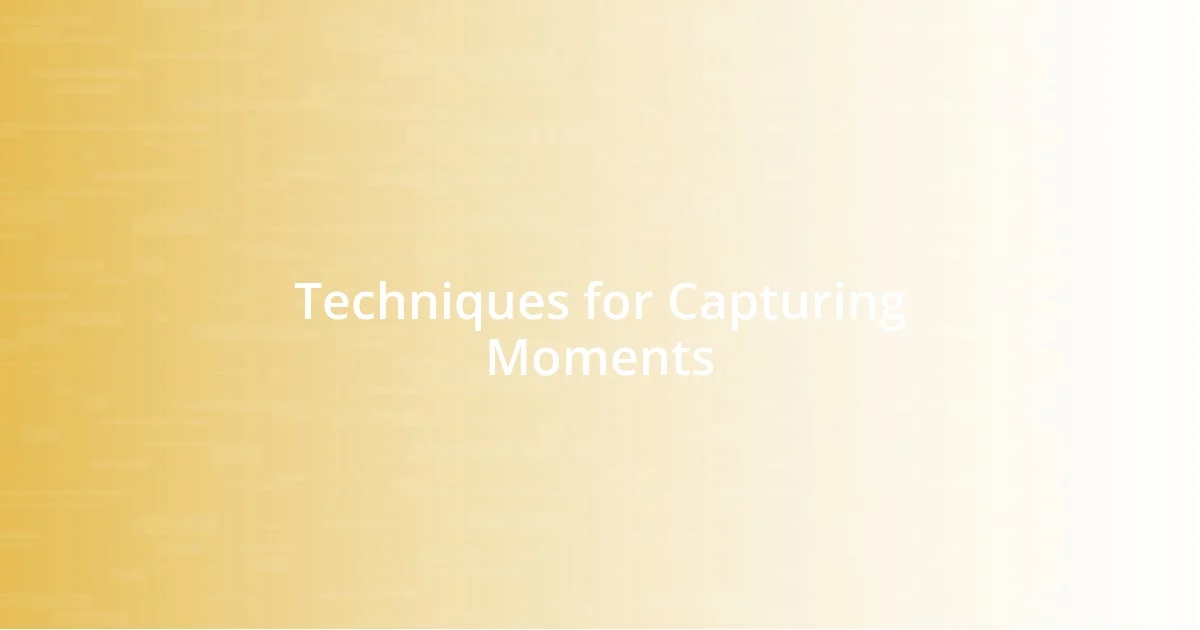
Techniques for Capturing Moments
To truly capture moments in cultural event photography, timing is everything. I often find myself holding my breath, waiting for that perfect expression or gesture. For instance, during a lively drum performance, I noticed the intensity on the musician’s face as he connected with the rhythm. That split second of focus made all the difference in creating a powerful image. Isn’t it fascinating how a fleeting moment can carry so much emotion?
Another technique I swear by is blending into the environment. When I attend events, I purposely dress modestly and move quietly to avoid drawing attention to myself. This approach allows me to be an unobtrusive observer, letting the natural interactions unfold around me. During a recent cultural festival, I sat cross-legged among the audience, capturing candid smiles and shared glances. I remember one woman who erupted into laughter, her joy palpable, and I felt privileged to freeze that moment in time. Have you ever felt that rush when you seize a genuine human connection through your lens?
Lastly, I believe in the power of composition to tell a deeper story. Using the rule of thirds often helps, but I’ve learned to let my instincts guide me as well. One afternoon at a folk dance, I placed the dancers off-center, allowing the vibrant audience to fill the other half of the frame. The resulting image not only showcased the performers but also celebrated the community around them. How often do we forget that our surroundings can enhance the story we want to tell? It’s about creating context, not just isolating a moment.
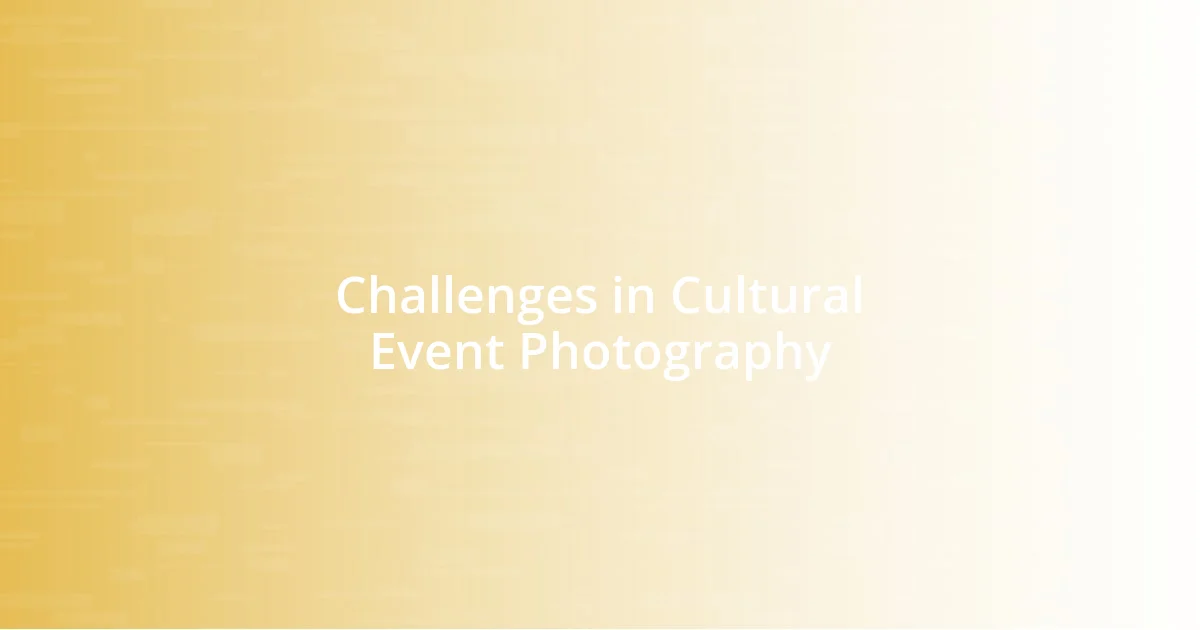
Challenges in Cultural Event Photography
One of the significant challenges I face in cultural event photography is lighting. Different events can present a range of lighting conditions that require quick adaptability. I recall attending a vibrant night market that transformed under flickering lanterns. However, getting those ambient lights to translate well in photos without blowing out the highlights was tricky. It forced me to experiment on the spot, pushing the limits of my camera’s ISO settings. Have you ever felt that pressure to make split-second adjustments just as the moment unfolds?
Crowd dynamics also play a pivotal role in how I capture cultural events. There have been times when I’ve found myself in the midst of a massive crowd, trying to get a clear shot of a traditional dance. The challenge of positioning myself to get both the dancers and the audience’s expressions can be quite daunting. I remember being at a festival where every angle I tried resulted in someone’s head blocking the view. In those moments, I learned the value of patience and creativity—sometimes, you have to be okay with just feeling the spirit of the event rather than capturing every detail perfectly. How do you navigate the tough balancing act of capturing intimacy within busy surroundings?
Another challenge that often catches me off guard is cultural sensitivity. Each culture has its own traditions and etiquettes, and missteps can lead to uncomfortable situations. I once photographed a prayer ceremony where I unknowingly crossed into a restricted area. The sudden shift in atmosphere made me acutely aware of my place as a photographer. It was a moment of humility, reminding me that capturing someone’s culture comes with the responsibility to respect their space and beliefs. How do you approach moments where you have to balance your role as an artist with the need to honor traditions?
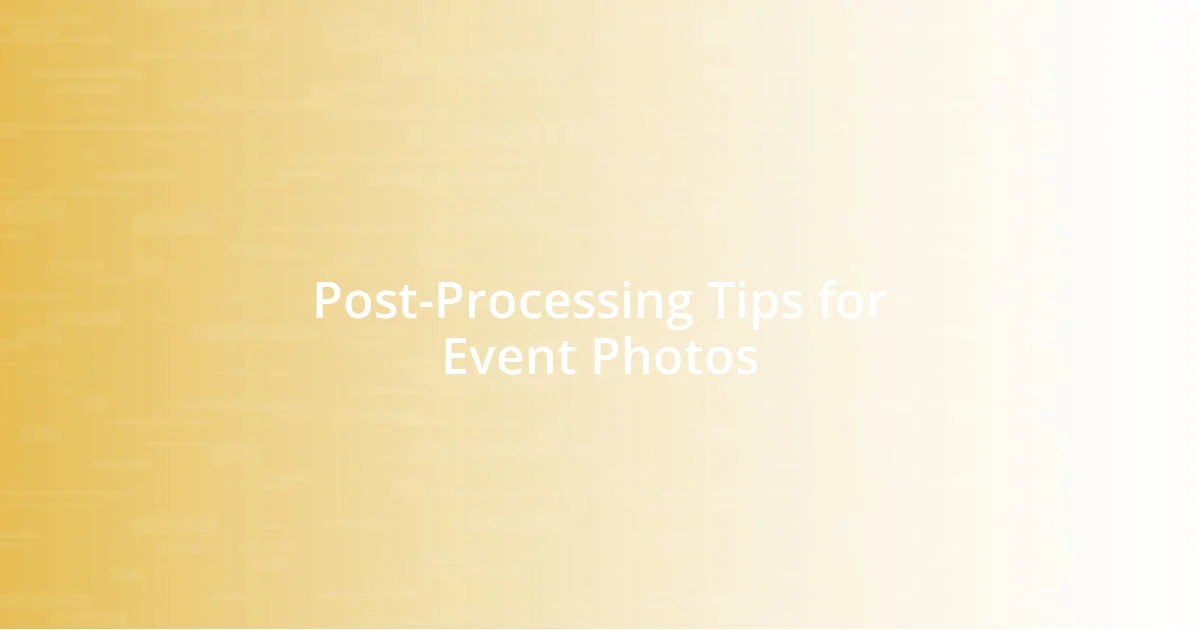
Post-Processing Tips for Event Photos
When diving into post-processing for event photos, I always remind myself that the magic really happens in the editing room. I typically start with adjusting exposure and contrast to bring out the vibrancy present in those lively moments. Just the other day, while processing shots from a cultural parade, tweaking the saturation helped the brilliant colors of the costumes pop, transforming them from dull to dazzling. Have you ever experienced that exhilarating moment when an image suddenly comes to life with just a few adjustments?
Color correction is another crucial step, and it’s where I often feel like I’m fine-tuning the spirit of the event. I remember processing photos from a lively dance festival where certain colors appeared washed out due to mixed lighting. By selectively enhancing hues, I was able to convey the joyous energy that filled the air. The moment I saw the image transform, I felt a rush of satisfaction, as if I had almost relived the experience again. How do you ensure the emotions of an event are captured in your final images?
Lastly, I find that cropping can make a significant difference in storytelling. After editing a series of photos from a local gathering, I stumbled upon a captivating image of a musician playing in a shadowy corner. In the original photo, the crowded background distracted from his expression. When I cropped the image to focus solely on him, it allowed his passion to shine through. This taught me that sometimes, less really is more. Have you ever considered how simple adjustments can elevate your narrative and make your images resonate even more?
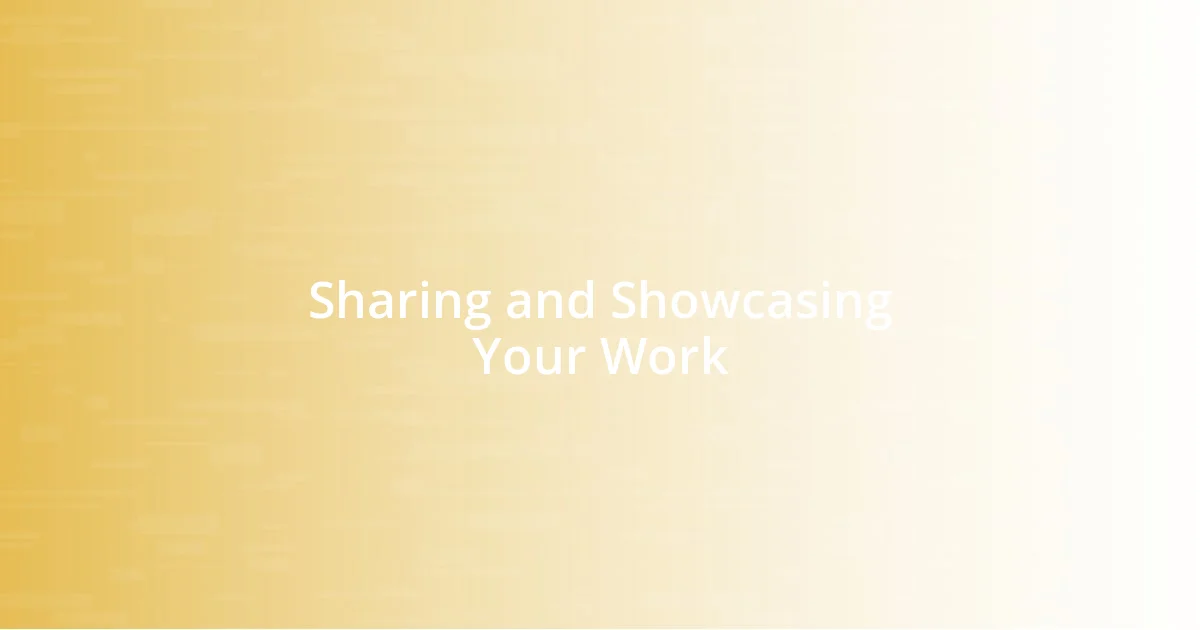
Sharing and Showcasing Your Work
Sharing and showcasing work is an essential part of being a cultural event photographer, and I’ve discovered that platforms like social media can amplify the reach of your art. I remember posting a series of images from a harvest festival; the moment I hit ‘publish,’ my heart raced. The comments and shares began to flow in, creating a dialogue about the traditions I captured. Have you felt that rush of community engagement when your work resonates with others?
In addition to social media, I’ve found that participating in local exhibitions can be incredibly rewarding. During one such event, I displayed prints of dancers in traditional attire, and I was taken aback by the reactions. People shared their stories and connections to the culture represented in my photos. Being able to witness their emotional responses firsthand solidified my belief in the power of visual storytelling. How do you connect with your audience in person?
Lastly, creating a portfolio website has become a vital part of my sharing process. It acts like a digital gallery that showcases my journey as a cultural photographer. I vividly remember curating the first version of my site; it felt like piecing together a puzzle that truly reflected my artistic vision. Every photo tells a story, and I want viewers to feel that connection when they visit. Do you have a space where your artistic voice shines through?
